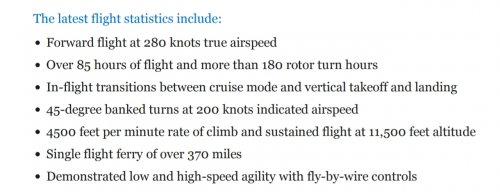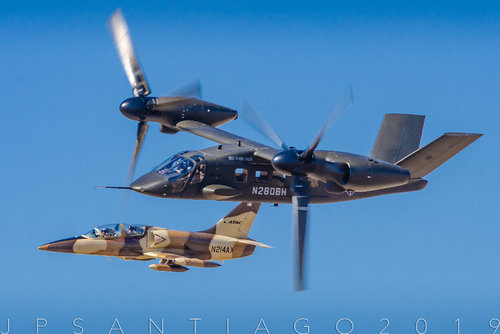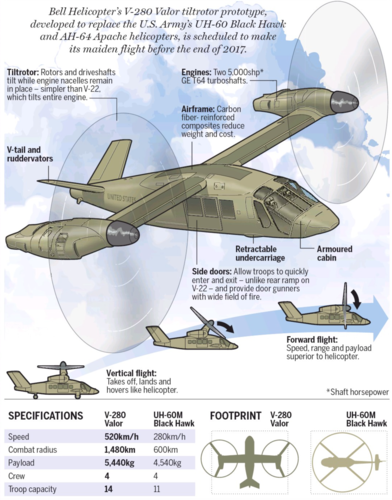During an earning call the same day, Donnelly praised the program, but said its future is tightly coupled to the Army’s upcoming fiscal 2020 budget.
“It'll affect our pace a lot,” Donnelly said of the upcoming budget. “We have no insight into what the [PB-20] looks like at this stage of the game. … At this point, look, we'll have no choice but to roll back any funding that we put into it, waiting to see what the army is going to do, because we've done what we can do."
[...]
“We would certainly hope to hear shortly, to start to see that — those statements turn into some contracted work,” Donnelly said. “We've now exceeded 280 knots. I think our team has done everything we've asked of them to design and build a terrific aircraft. … So it's sort of debunked all these notions that a tiltrotor product can't have the maneuverability of a more conventional aircraft, the speed now going through and then breaking through that 280 knot performance envelope. This thing does everything and more than it was expected to do.”



